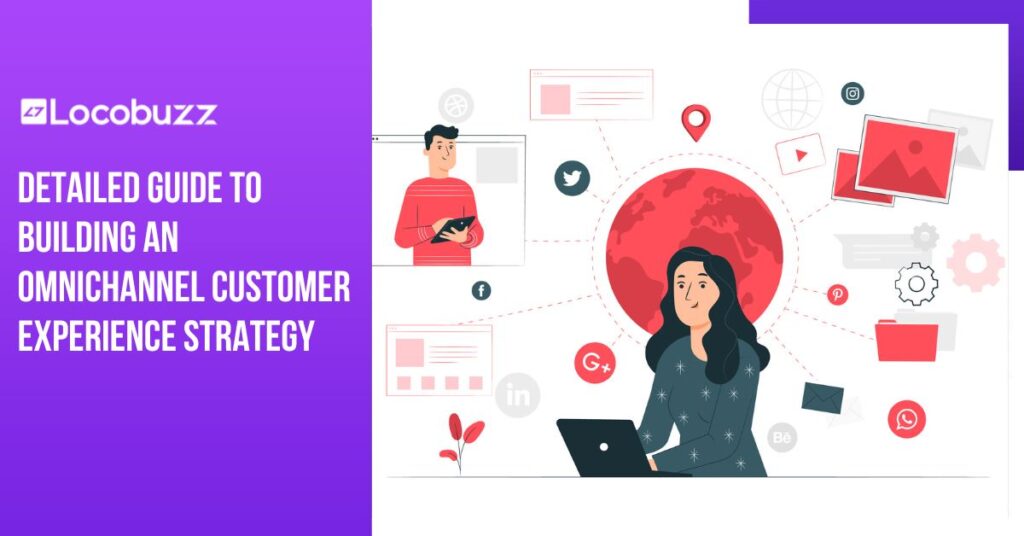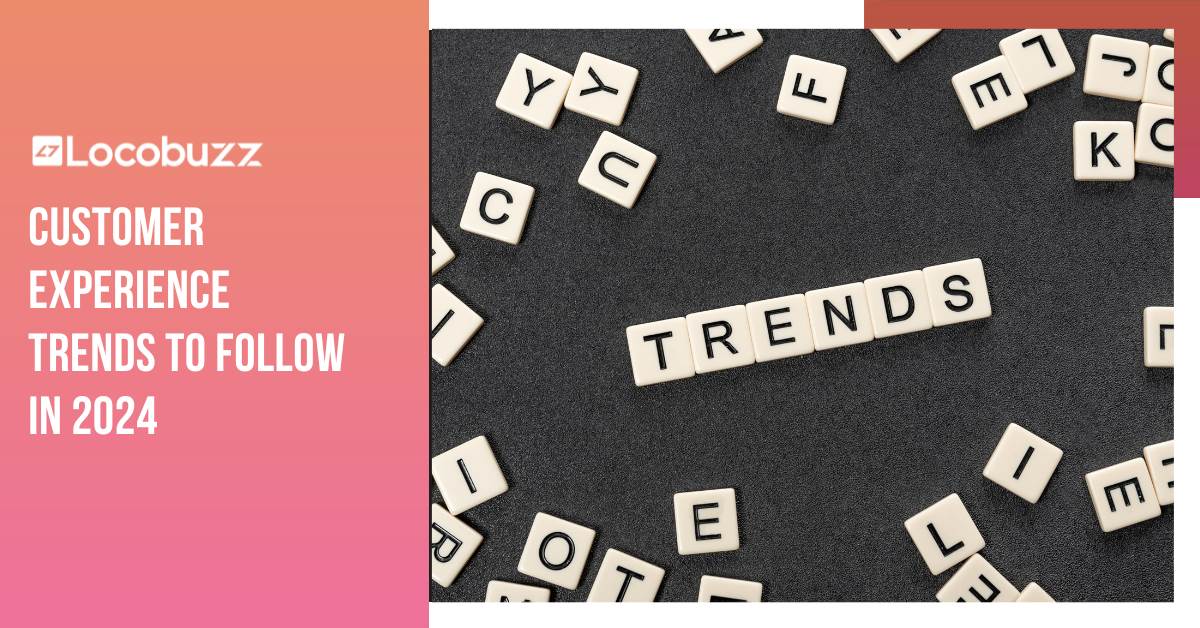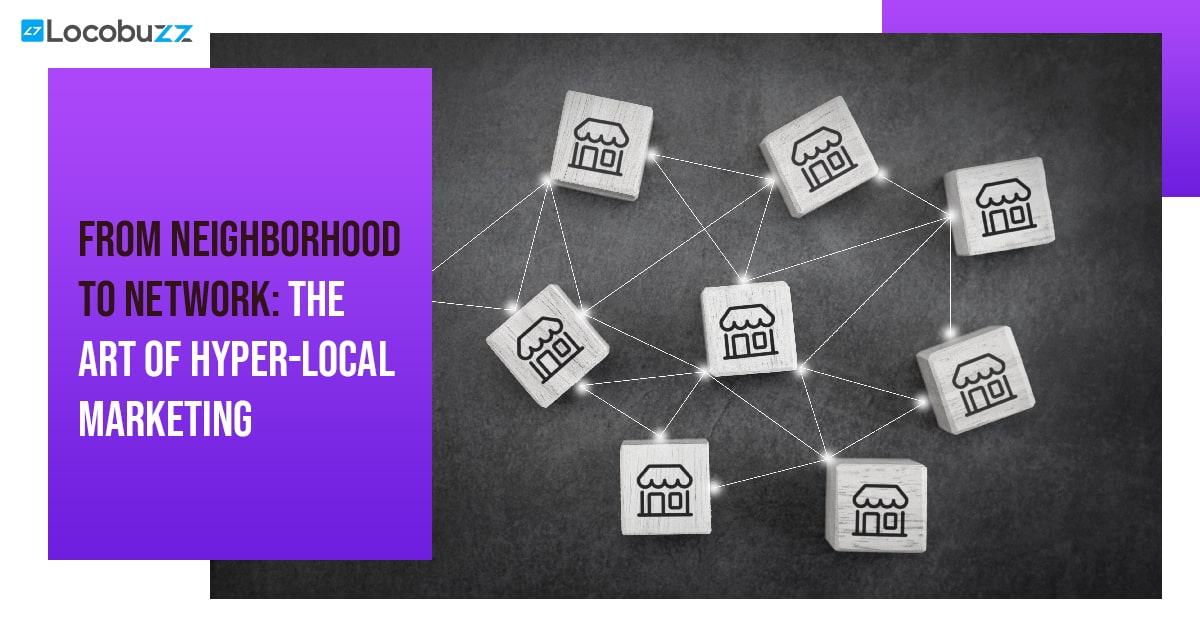Detailed Guide to Building an Omnichannel Customer Experience Strategy

Shefali Mathur
We live in a highly connected world.
We’re talking about the physical stores, mobile engagement, and the online web buzz.
Ideally, the close connection should work in the favour of a great customer experience. However, there continues to be a gap in establishing that uninterrupted customer care, which directly impacts a brand’s reputation.
To stay ahead in this digital game, brands must roll with all three, aligning their ecosystems with them and being omnipresent for their customers.
Being omnipresent is more than just being on multiple platforms. It means allowing your customers to seamlessly continue their conversation or activity from where they left off, regardless of the platform.
For instance, if they posed a query about the refund for a product via the website and switched the conversation to Instagram (maybe because they are on the move), a brand with a good omnichannel presence will be able to help them seamlessly, irrespective of the platform by tracking their ticket effectively.
Omnipresence leads to an omnichannel experience, which we want to build so your website visitors can become loyal customers.
This no-fluff blog will explore the what, why and where of an omnichannel customer experience and how you can implement it for your brand.
What is an Omnichannel Customer Experience?
An omnichannel customer experience is a platform-agnostic approach that allows brands to create a conversation pipeline across several relevant channels. This enables agents to cater to customer requests and concerns without missing a beat.
However, a multi-channel presence cannot continue conversations across multiple platforms – it merely increases the brand’s footprint across these channels.
For instance, if your customer sends a query via email, he/she can later continue the conversation on your Instagram DM or via SMS.
This is possible because of the integration of multiple platforms that create a seamless conduit for conversations to flow from one channel to another.
Many customer-centric companies rely on omnichannel customer experience to improve their satisfaction score.
We often collaborate with clients utilising various communication channels, but sometimes, these channels aren’t seamlessly connected. For instance, locating the initial message can be challenging if a customer emails via the website and, later, calls, With omnichannel customer support, we can consolidate all messages in one place, ensuring open communication with our clients. Whether it’s a voicemail or a website, we know the source and can provide the best service promptly. – Will Yang, Head of Growth and Customer Success, Instrumentl |
First Things First - An Omnichannel Customer Experience Checklist
- Identify your customer touchpoints. It gives you an understanding of the platforms with the most audience density and how to connect them for strong brand recall and customer satisfaction.
- Ensure your in-store inventory and order systems communicate seamlessly with your online platforms. From the moment they visit your site to the checkout process, aim for a simple and enjoyable journey.
- Ensure your customers find it easy to move from their in-store experience to your online and mobile platforms.
Building Your Omnichannel Customer Experience Strategy
Businesses with a strong omnichannel customer engagement strategy are likely to experience a business growth of 9.5%/ (GoDaddy).
Building an omnichannel strategy requires a detailed understanding of your customer, your process, the existing funnel, and how to leverage it to create a better experience strategy for your brand.
Here’s how you can start:
1. Research Your Customer
Seamless integration across channels has boosted customer satisfaction scores by 30%. A recent example involved a complex query resolved swiftly through a blend of live chat and email, demonstrating the efficiency of our strategy. Moreover, our user base has grown by 20%, highlighting the positive impact on engagement and retention. – Abhishek Shah, Founder, Testlify |
It is interesting to note that a GenZ customer might prefer chatting up on Instagram while a GenX may prefer you calling them up or vice-versa and having an in-depth conversation about the product or service. This might not be the case with every member of that particular group, but that has been the general consensus.
How can you create the right ICP?
Some factors you can include are
Budget: Categorizing customers based on their budget allows for more targeted marketing approaches that align with product offerings.
Geography: The customer’s location significantly influences the suitability of a product for them, making geographical considerations crucial for effective marketing strategies.
Reasons to Purchase: Understanding the motives behind a customer’s buying decision, whether driven by trends, specific needs, or genuine interest, provides valuable insights for tailored marketing approaches.
Preferred Purchase Platforms: Identifying where customers will likely engage with your product—whether through your Instagram shop, paid ads, or professional platforms like LinkedIn—helps refine your outreach strategies.
Gender: Recognizing the impact of gender on product preferences is essential for creating targeted marketing campaigns that resonate with specific gender demographics.
This is not an exhaustive list but does form the base for B2B or B2C ICP, which can help you retrace your steps and create a service map or touch points for your customers.
Here’s an example of an ICP of a new-age beauty brand.
Customer Persona: The Beauty Enthusiast Name: Emma Demographics:
Background: Emma is a modern, independent woman who values simplicity and authenticity. She leads a busy life, juggling work, social activities, and personal interests. Emma is health-conscious and cares about the environment. She stays updated on the latest trends and seeks products that align with her values. Behaviour and Lifestyle:
Goals and Pain Points:
Motivations:
Brand Loyalty Triggers:
Preferred Channels:
|
2. Map Your Customer Journey
Wouldn’t it be great to know where your customer was at all times? This would truly define the ultimate customer lifecycle journey, giving you the power to create a tailor-made experience for them. However, a customer’s journey is unpredictable, and so is their lifecycle on your brand.
This is where you need to define your customer touch points. These can be
- The chatbot on your website,
- Your email channel,
- Social media handles,
- Third-party review websites
- Feedback surveys
These touchpoints help you create multiple pathways for your customers to contact you. It makes multiple options from where your customers might engage with your brand.


For instance, the Indian furniture renting brand Rentomojo’s primary mode of communication is its chatbot. The team also connects via calls, emails and WhatsApp to ensure immediate response and resolutions. The brand also has a presence on social media platforms like Instagram and Facebook, but it engages in customer service via the aforementioned brands.
Please note that choosing these touchpoints or channels is important. Not all platforms will help deliver strong customer support and experience, adding to the clutter.
Consider your customers’ preferences before spreading your team too thin.
3. Integrate your channels with your platform
At the heart of delivering a seamless omnichannel customer experience lies the crucial step of integrating your preferred communication channels with your central platform. After identifying the channels that resonate most with your target audience, the next strategic move is to ensure these channels are seamlessly interconnected with your primary business platform.
Tools like Locobuzz can facilitate this integration as a bridge connecting your ecosystem with the selected communication channels.
By establishing this one-stop setup, your team gains the ability to consolidate customer interactions, tickets, and workflow within a unified environment. This consolidation transforms how your agents handle customer-related tasks, improving efficiency and productivity.
Key Benefits of Channel Integration:
Streamlined Customer Conversations: Integrating channels with your platform allows your team to manage customer conversations cohesively. Agents can access and respond to customer queries or issues from a centralized interface, preventing information silos and ensuring a consistent customer experience.
Efficient Ticket Management: The integration facilitates the seamless creation and management of customer service tickets. Agents can effortlessly track, prioritize, and resolve issues within a unified system, eliminating the need to navigate multiple platforms for different tasks.
Workflow Optimisation: With all communication channels integrated into a single platform, workflow processes become more efficient. Agents can navigate between channels and manage tasks without switching between disparate tools, reducing the risk of errors and streamlining overall operations.
Time and Effort Savings: A unified platform significantly reduces the time and effort required by your team to navigate various channels independently. This is particularly beneficial for teams dealing with high workloads, as it minimises the load on agents and allows them to focus more on providing quality customer support.
Challenges
Complex Customer Journey
Consistency Across Platforms
Maintaining a consistent brand voice, messaging, and experience across all platforms, from social media to in-person interactions, requires meticulous planning and coordination.
Tip: Establish clear brand guidelines, enforce consistent messaging across platforms, and utilise technology for automated content delivery.
Platform Integration
Integrating disparate platforms and ensuring data flows smoothly and customer interactions are tracked accurately can be complex technical challenges.
Tip: Invest in unified customer experience platforms that facilitate seamless data exchange and communication between platforms.
Third-Party Integrations
Integrating existing customer support systems with third-party platforms often presents technical hurdles and requires careful planning and testing.
Tip: Carefully evaluate third-party integrations, ensure compatibility with existing systems, and conduct thorough testing before deployment.
Employee Knowledge Gap
An employee knowledge gap can undermine your brand’s extensive touchpoints to service your customers. Upskilling employees to navigate the omnichannel environment, understand various platforms, and provide consistent support necessitates dedicated training or external expertise.
Tip: Provide comprehensive training programs for employees on new platforms, utilise gamified learning solutions, and offer ongoing support resources.
Why Should You Go For an Omnichannel Customer Experience?
By embracing omni-channel customer support, you unlock a world of benefits.
This approach goes beyond just offering consistent and personalised care; it grants you deeper insights into your customers – their preferences, needs, and entire journey with your product. This data-driven understanding empowers you to refine your product and continuously confidently make strategic decisions.
Think of it like meeting your customers on their own terms. Prefer email? We’ll send you a helpful message with a link to our site, where you can chat live or schedule a call. Phone person? No problem. Just dial our number and connect instantly! -Dave Kerr, Advertising Specialist, Merged Dental Marketing |
Success Metrics of Your Omnichannel Customer Experience Strategy
1. Website Behaviour Analysis
2. Understanding Customer Motivations
3. Customer Engagement Data Analysis
4. Customer Satisfaction Metrics: The Pulse of Customer Loyalty
Utilising customer satisfaction (CSAT) scores and Net Promoter Score (NPS) surveys enables businesses to understand customer satisfaction and loyalty comprehensively.
These surveys provide invaluable feedback on areas needing improvement and help businesses identify opportunities to enhance customer experience across all touchpoints.
Monitoring resolution rates and first contact resolution (FCR) rates offer further insights into the effectiveness of omnichannel support, allowing businesses to identify and address any potential bottlenecks in the support process.
When analysing Customer Engagement Metrics, it is critical to monitor Channel Usage actively, finding patterns and preferences. The Channel Switching Rate provides insight into the omnichannel experience’s seamlessness, whereas the Channel Conversion Rate assesses the effectiveness of each channel in encouraging desired behaviours. -Adam Young, CEO, Event Tickets Center |
5. Third-Party Platform Insights
6. Integrating Customer Feedback
Actively gather feedback through surveys and other channels. Analyse this information to understand customer preferences and identify areas for improvement. Integrating customer feedback into your decision-making process ensures your omnichannel strategy evolves alongside your customers’ needs and expectations.
By implementing these methods and analysing the data gathered, businesses can gain valuable insights into the effectiveness of their omnichannel initiatives. This knowledge empowers them to refine their strategy continually, driving positive customer engagement and satisfaction and ultimately achieving their omnichannel goals.
Deliver a wholesome omnichannel customer experience with Locobuzz
To establish genuine connections with customers, it’s imperative for brands to wholeheartedly adopt omnichannel experiences. The crux of this approach lies in connecting diverse channels and touchpoints.
Before we end this journey, here’s a checklist that you can keep in mind to build a strong omnichannel strategy, despite the social weather.
- Holistic integration of channels
- Unified customer data
- Consistent brand messaging
- Establish real-time communication
- Optimise your mobile CX
- Analytics and insights
- Employee training and collaboration
- Customer feedback and iteration
Elevate your brand’s customer engagement and satisfaction by navigating the evolving digital terrain with an effective omnichannel customer experience strategy.
Ready to elevate your customer experience?
Explore Locobuzz’s omnichannel solutions today and transform how you connect with your customers.






















